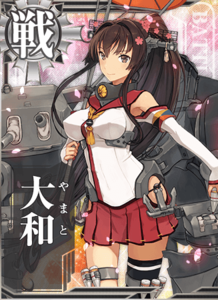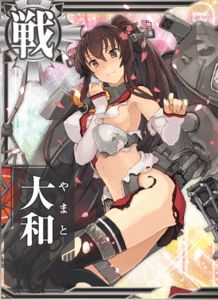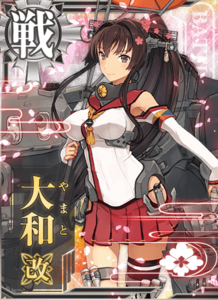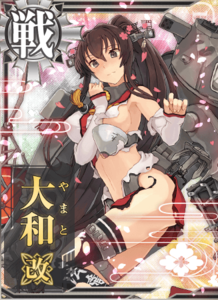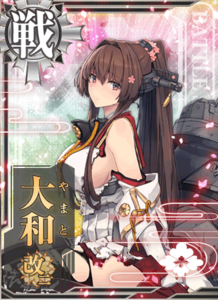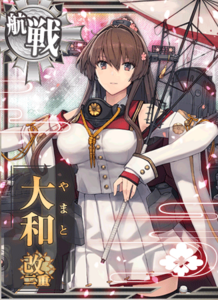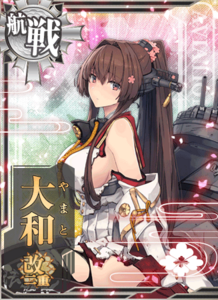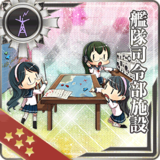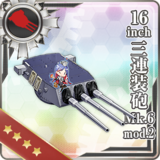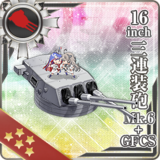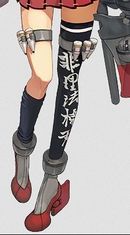- Welcome to the Kancolle Wiki!
- If you have any questions regarding site content, account registration, etc., please visit the KanColle Wiki Discord
Difference between revisions of "Yamato"
Jigaraphale (talk | contribs) m (→Gameplay Notes) |
Jigaraphale (talk | contribs) m (→Trivia) |
||
| Line 874: | Line 874: | ||
;Misc | ;Misc | ||
[[File:Sock.jpg|right|130px|'Hirihoukenten' sock]] | [[File:Sock.jpg|right|130px|'Hirihoukenten' sock]] | ||
| − | *Was cynically referred as "[http://en.wikipedia.org/wiki/Yamato_Hotel Yamato Hotel]", a hotel located in Dalian China during WW2 time, as she never took part in any major battle pre-1944 due to her high consumption and her status as IJN's flagship. Referred | + | *Was cynically referred as "[http://en.wikipedia.org/wiki/Yamato_Hotel Yamato Hotel]", a hotel located in Dalian China during WW2 time, as she never took part in any major battle pre-1944 due to her high consumption and her status as IJN's flagship. Referred as such in-game for the same reason. |
| − | * Yamato's remodel art features a 'Hirihoukenten (非理法権天)' kneesock (originally a flag). It reflects one of the old philosophy in feudal Japan where foolishness (非) is not above sensibility (理), sensibility is not above law (法), law is not above authority (権), and authority is not above divinity (天). As the emperor was treated as a divine figure in imperial Japan it has a meaning of "no men can oppose the (divine) emperor". A slogan adopted by the Imperial Japanese navy, this flag was hung on Yamato on her final voyage | + | * Yamato's remodel art features a 'Hirihoukenten (非理法権天)' kneesock (originally a flag). It reflects one of the old philosophy in feudal Japan where foolishness (非) is not above sensibility (理), sensibility is not above law (法), law is not above authority (権), and authority is not above divinity (天). As the emperor was treated as a divine figure in imperial Japan it has a meaning of "no men can oppose the (divine) emperor". A slogan adopted by the Imperial Japanese navy, this flag was hung on Yamato on her final voyage toward Okinawa. |
| − | * Wreck discovered on August | + | * Wreck discovered on the 1st of August 1985, in 341 m (1120 ft) of water in the East China Sea 180 miles Southwest of Kyushu and North of Okinawa. |
| − | *She wears an Armband that resembles the Maritime signal Flag for the letter "Z", the Z flag played a major role in Japanese Naval History. On May | + | * She wears an Armband that resembles the Maritime signal Flag for the letter "Z", the Z flag played a major role in Japanese Naval History. On the 27th of May 1905, Admiral Heihachirō Tōgō raised the Z flag on his flagship the IJN Mikasa before the start of the Battle of Tsushima, and the Z flag was raised on the [[Akagi]] on the eve of the Attack on Pearl Harbor. The raising of the flag means the following: "The fate of Imperial Japan hangs on this one battle; all hands will exert themselves and do their best." |
| + | * The "Juu" in "Kai Ni Juu" means "heavy", emphasizing her having more and large guns and armor. | ||
==See Also== | ==See Also== | ||
*[[wikipedia:Japanese_battleship_Yamato|Wikipedia entry on battleship Yamato]] | *[[wikipedia:Japanese_battleship_Yamato|Wikipedia entry on battleship Yamato]] | ||
{{shiplist}} | {{shiplist}} | ||
Revision as of 19:35, 21 February 2023
Info
| |||||||||||||||||||||||||||||||||||||||||
| |||||||||||||||||||||||||||||||||||||||||
| |||||||||||||||||||||||||||||||||||||||||
| |||||||||||||||||||||||||||||||||||||||||
| |||||||||||||||||||||||||||||||||||||||||
| |||||||||||||||||||||||||||||||||||||||||
| |||||||||||||||||||||||||||||||||||||||||
| |||||||||||||||||||||||||||||||||||||||||
Gameplay Notes
Battleships (BB) notably utilize ![]() Large Caliber Main Guns,
Large Caliber Main Guns, ![]() Recon Seaplane Recons, and
Recon Seaplane Recons, and ![]() AP Shells, having heavy firepower
AP Shells, having heavy firepower ![]() and armor
and armor ![]() , but lacking torpedo & ASW stats. They:
, but lacking torpedo & ASW stats. They:
- Are required to unlock the "Second Shelling Phase".
- Must be "Fast+" to be placed in the Escort of a Combined Fleet.
Fast Battleships (FBB) are BB with higher speed. They:
- Usually have more permissive Routings,
- Can be placed in the Escort of a Combined Fleet regardless of their speed.
Aviation Battleships (BBV) are BB capable of using ![]() Bomber Seaplane Bombers and
Bomber Seaplane Bombers and ![]() Seaplane Fighters. They:
Seaplane Fighters. They:
- Can participate in Aerial Combat,
- Have some ASW capacities.
Special Mechanics
- Can convert between Kai Ni and Kai Ni Juu remodels.
- If she is ASW moded at Kai Ni Juu and then converted back to Kai Ni, Yamato will keep the ASW moding.
- She is then able to attack submarines without any equipment.
- If she is ASW moded at Kai Ni Juu and then converted back to Kai Ni, Yamato will keep the ASW moding.
- Kai Ni
- Becomes a FBB.
- Kai Ni Juu
- Becomes a BBV.
- Kai Ni/Juu
- Can perform special AACI:
| AACI Patterns | ||||||
|---|---|---|---|---|---|---|
| API value | Type | Shot down per slot |
K-value | Rate | User | Notes |
| 26 |  |
+7 | 1.4 | 55% | Yamato Kai Ni/Juu 
|
10cm Twin HA Mount Kai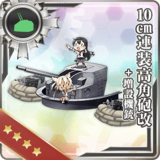 + Air Radar + Air Radar
|
| 42 |   |
+11 | 1.65 | ?% | Very large radar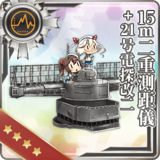 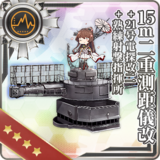 + 1 or 2 10cm Twin HA Gun CD + 1 or 2 10cm Twin HA Gun CD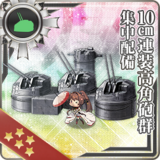 + 0 or 1 AA Gun (≥6 AA) + 0 or 1 AA Gun (≥6 AA)
| |
| 43 |   |
+9 | 1.6 | ?% | ||
| 44 |  |
+7 | 1.6 | ?% | ||
| 45 |  |
+6 | 1.55 | ?% | ||
- Kai Ni Juu
- Can perform special OASW:
| Ship | ASW Stat Required | Equipment Required |
|---|---|---|
| 100+ ASW | Sonar + Seaplane Bomber or Rotorcraft |
Yamato Special Attacks
Yamato gains two different special attacks on Kai Ni/Juu, distinguished by how many ships participate:
- The 2-ship touch, for the Yamato-class,
- The 3-ship touch', for Yamato Kai Ni/Juu only.
Devs also have stated that the touch helpers will be updated with relevant ship implementation [1].
- So far have been added:
Yamato-class 2-Ship Special Attack
At Kai Ni/Juu, Yamato and Musashi gain a special attack:
| "Touch Helpers" | ||
|---|---|---|
| Yamato Flagship: | Musashi Flagship: | |
- A Yamato-class Kai Ni/Juu must be flagship.
- Secretary for combined fleets.
- She must not be more than lightly damaged (小破).
- Another "Touch Helper" must be in the 2nd position.
- She must not be more than lightly damaged (小破).
- When using Musashi Kai Ni as the helper in the 2nd position with a Nagato-class Kai Ni in the 3rd one being lightly damaged (小破) or better, there is a random chance to trigger the "3-Ship Special Attack" instead.
- There must be 6 or more surface ships in the fleet.
- In single fleet, Echelon
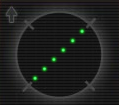 needs to be selected.
needs to be selected. - In a combined fleet, Cruising Formation 4
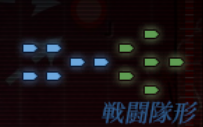 needs to be selected.
needs to be selected. - The touch can activate even if Yamato Kai Ni Juu is equipped with ASW equipment when facing a fleet mixed with submarines.
If triggered:
- The flagship will do a 1st & 2nd attack,
- The Helper will do a 3rd attack,
- Each attack targets a ship at random,
- If all enemies sunk, then touch stops early.
| Equipment | Yamato Kai Ni Juu 2nd 2nd
|
Yamato-class Kai Ni  2nd 2nd
|
Other Helpers  
| |||
|---|---|---|---|---|---|---|
| Attacks 1 & 2 | Attack 3 | Attacks 1 & 2 | Attack 3 | Attacks 1 & 2 | Attack 3 | |
| No Bonus Equipment | 1.54 | 1.94 | 1.54 | 1.86 | 1.40 | 1.55 |
| 1.77 | 2.23 | 1.77 | 2.14 | 1.61 | 1.78 | |
  Only Only
|
1.96 | 2.45 | 1.95 | 2.35 | 1.77 | 1.96 |
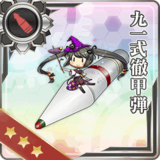 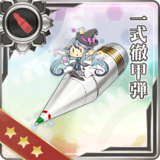 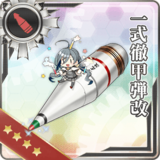 Only Only
|
2.08 | 2.62 | 2.08 | 2.51 | 1.89 | 2.09 |
   + + |
2.39 | 3.01 | 2.39 | 2.89 | 2.17 | 2.41 |
   + +  
|
2.63 | 3.31 | 2.63 | 3.18 | 2.39 | 2.65 |
The attack will consume extra ammo from participating ships when triggered. The total ammo consumption will be x1.6 of the original ammo consumption of those ships when the attack is triggered.
The touch:
- Can be triggered even if artillery spotting fails to activate.
- Can only be activated once per sortie.
- Has a chance to trigger every time the flagship takes a turn at shelling.
- In single fleet, if it fails to trigger in day battle, there is a chance to trigger it in the follow-up night battle.
- The rate is[1][2][3]:
| [math]\displaystyle{ \text{Trigger}_\text{Rate}\text{%} = \Biggl\lfloor \sum_\text{Ships} \sqrt{\text{Lv}} + 1.25 \times \sum_\text{Ships} \sqrt{\text{Luck}} + \text{A} + \text{B} + 33 \Biggr\rfloor }[/math] |
- With
- [math]\displaystyle{ \text{Lv} }[/math] the Level of the participating ships,
- [math]\displaystyle{ \text{Luck} }[/math] the
 Luck of the participating ships,
Luck of the participating ships, - [math]\displaystyle{ \text{A} }[/math] the helper bonus, being:
- 4 if Yamato is helper,
- 7 if Musashi is the helper,
- 0 otherwise.
- [math]\displaystyle{ \text{B} }[/math] the bonus for equipping
 Radars with (
Radars with ( Acc ≥ 8?), being:
Acc ≥ 8?), being:
- 10 if 1 ship has a radar,
- 20 if both ships have a radar,
- 0 otherwise.
| Ship | Japanese/English | Notes |
|---|---|---|
| Yamato Play |
Yamato, leading the attack! Musashi, follow me! 1st Fleet, all guns, full salvo! | Special Attack Line with Musashi |
| 大和、突撃します!武蔵続いてッ!第一戦隊、全主砲、全力斉射ッ! | ||
| Yamato Play |
Yamato, leading the attack! 2nd ship, please follow my lead! All guns, full salvo! | Special Attack Line |
| 大和、突撃します!二番艦も続いてください!全主砲、斉射ッ! | ||
| Musashi Play |
Oh, Yamato. Forming a battlegroup with you feels so natural. This is what it means to be a battleship. | Special Attack Line with Yamato |
| おう、大和よ、お前とこうして戦隊を組むのは格別だな。これが戦艦だ。 |
Yamato 3-Ship Special Attack
At Kai Ni/Juu, Yamato gains a special attack:
- Yamato Kai Ni/Juu must be the flagship.
- Secretary for combined fleets.
- She must not be more than lightly damaged (小破).
- A pair of ships from a same "Helper Pair" must be in the 2nd and 3rd positions.
- They must not be more than lightly damaged (小破).
- When using Musashi Kai Ni as the helper in the 2nd position with a Nagato-class Kai Ni in the 3rd one:
- If the 3rd ship is lightly damaged (小破) or better, there is a random chance to trigger the "2-Ship Special Attack" instead.
- If the 3rd ship is moderately damaged (中破) or worse, the "2-Ship Special Attack" will trigger instead.
- There must be 6 or more surface ships in the fleet.
- In single fleet, Echelon
 needs to be selected.
needs to be selected. - In a combined fleet, Cruising Formation 4
 needs to be selected.
needs to be selected. - The touch can activate even if Yamato Kai Ni Juu is equipped with ASW equipment when facing a fleet mixed with submarines.
| "Helper Pairs" | |||||
|---|---|---|---|---|---|
| One of the following pairs: | |||||
| Musashi Kai Ni 2nd ship: | In any order: | ||||
Musashi Kai Ni + 1 Nagato-class Kai Ni  
|
| ||||
If triggered:
- Yamato will do a 1st attack,
- The 2nd ship will do a 2nd attack,
- The 3rd ship will do a 3rd attack,
- Each attack targets a ship at random,
- If all enemies sunk, then touch stops early.
| Equipment | Musashi Kai Ni (& Helper (& Helper  ) )
|
Nagato-class  Pair Pair
|
Ise-class  Pair Pair
|
Other "Helper Pairs" | Any "Helper Pairs" | ||
|---|---|---|---|---|---|---|---|
| Attacks 1 | Attacks 2 | Attack 1 & 2 | Attacks 1 | Attacks 2 | Attack 1 & 2 | Attacks 3 | |
| No Bonus Equipment | 1.65 | 1.80 | 1.65 | 1.65 | 1.58 | 1.50 | 1.65 |
| 1.90 | 2.07 | 1.90 | 1.90 | 1.80 | 1.73 | 1.90 | |
  Only Only
|
2.09 | 2.28 | 2.09 | 2.09 | 1.99 | 1.90 | |
   Only Only
|
2.23 | 2.43 | 2.23 | 2.23 | 2.13 | 2.03 | 2.23 |
   + + |
2.56 | 2.79 | 2.56 | 2.56 | 2.45 | 2.33 | 2.56 |
   + +  
|
2.82 | 3.07 | 2.82 | 2.82 | 2.69 | 2.56 | |
The attack will consume extra ammo from participating ships when triggered. The total ammo consumption will be x1.8 of the original ammo consumption of those ships when the attack is triggered.
The touch:
- Can be triggered even if artillery spotting fails to activate.
- Can only be activated once per sortie.
- Has a chance to trigger every time the flagship takes a turn at shelling.
- In single fleet, if it fails to trigger in day battle, there is a chance to trigger it in the follow-up night battle.
- The rate is probably:
| [math]\displaystyle{ \text{Trigger}_\text{Rate}\text{%} = \Biggl\lfloor \text{V} \times \sum_\text{Ships} \sqrt{\text{Lv}} + \text{W} \times \sum_\text{Ships} \sqrt{\text{Luck}} + \text{X} + \text{Y} \Biggr\rfloor }[/math] |
- With
- [math]\displaystyle{ \text{Lv} }[/math] the Level of the participating ships,
- [math]\displaystyle{ \text{Luck} }[/math] the
 Luck of the participating ships,
Luck of the participating ships, - [math]\displaystyle{ \text{V & W} }[/math] some yet unknown bonus factors,
- [math]\displaystyle{ \text{X} }[/math] some yet unknown bonus variables,
- [math]\displaystyle{ \text{Y} }[/math] some yet unknown base rate.
It is notably affected by:
- The Level and luck
 stat of the participating ships,
stat of the participating ships,  Surface Radars (5+ LoS?) on attacking ships (+8~10 %)[1].
Surface Radars (5+ LoS?) on attacking ships (+8~10 %)[1].
It is currently measured above 70 %.
| Ship | Japanese/English | Notes |
|---|---|---|
| Yamato Play |
Yamato, leading the attack! 2nd ship, please follow my lead! All guns, full salvo! | Special Attack Line |
| 大和、突撃します!二番艦も続いてください!全主砲、斉射ッ! |
Main source: [2]
Stats Exceptions
- Is Very Long Range.
- Base/Kai
- Is from Speed Group Slow A.
- Kai Ni
- Has 5 equipment slots.
- Is from Speed Group Fast B1.
- Kai Ni Juu
- Has 5 equipment slots.
- Is from Speed Group Slow A.
Equipability Exceptions
| BB | Default equipment compatibility | |
|---|---|---|
| ✔️ Can Equip | ❌ Cannot Equip | |
| RE: | ||
| Equipability notes: | ||
| FBB | Default equipment compatibility | |
|---|---|---|
| ✔️ Can Equip | ❌ Cannot Equip | |
| RE: | ||
| Equipability notes: | ||
| BBV | Default equipment compatibility | |
|---|---|---|
| ✔️ Can Equip | ❌ Cannot Equip | |
| RE: | ||
| Equipability notes: | ||
Fit Bonuses
| [edit]Yamato Kai Ni Juu Equipment Bonuses | |||||||||||||||||||||||||||||||||||||||||||||||||||||||||||||||||||||||||||||||||||||||||||||||||||
|---|---|---|---|---|---|---|---|---|---|---|---|---|---|---|---|---|---|---|---|---|---|---|---|---|---|---|---|---|---|---|---|---|---|---|---|---|---|---|---|---|---|---|---|---|---|---|---|---|---|---|---|---|---|---|---|---|---|---|---|---|---|---|---|---|---|---|---|---|---|---|---|---|---|---|---|---|---|---|---|---|---|---|---|---|---|---|---|---|---|---|---|---|---|---|---|---|---|---|---|
| Equipment | Extra Requirement | Note | |||||||||||||||||||||||||||||||||||||||||||||||||||||||||||||||||||||||||||||||||||||||||||||||||
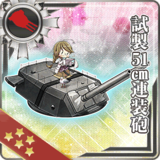 OR 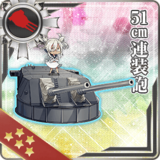
|
+1 | +1 | |||||||||||||||||||||||||||||||||||||||||||||||||||||||||||||||||||||||||||||||||||||||||||||||||
+ 15m Duplex Rangefinder + Type 21 Radar Kai 2 OR 15m Duplex Rangefinder Kai + Type 21 Radar Kai 2 + Skilled Fire Direction Center OR 15m Duplex Rangefinder Kai + Type 21 Radar Kai 2 + Skilled Fire Direction Center
|
+1 | +2 | One-time | ||||||||||||||||||||||||||||||||||||||||||||||||||||||||||||||||||||||||||||||||||||||||||||||||
+ 15m Duplex Rangefinder Kai + Type 21 Radar Kai 2 + Skilled Fire Direction Center
|
+1 | +1 | One-time | ||||||||||||||||||||||||||||||||||||||||||||||||||||||||||||||||||||||||||||||||||||||||||||||||
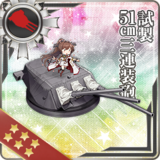
|
+2 | +2 | +8 | ||||||||||||||||||||||||||||||||||||||||||||||||||||||||||||||||||||||||||||||||||||||||||||||||
+ 15m Duplex Rangefinder + Type 21 Radar Kai 2 OR 15m Duplex Rangefinder Kai + Type 21 Radar Kai 2 + Skilled Fire Direction Center OR 15m Duplex Rangefinder Kai + Type 21 Radar Kai 2 + Skilled Fire Direction Center
|
+2 | +2 | One-time | ||||||||||||||||||||||||||||||||||||||||||||||||||||||||||||||||||||||||||||||||||||||||||||||||
+ 15m Duplex Rangefinder Kai + Type 21 Radar Kai 2 + Skilled Fire Direction Center
|
+1 | +2 | One-time | ||||||||||||||||||||||||||||||||||||||||||||||||||||||||||||||||||||||||||||||||||||||||||||||||
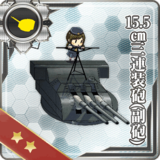
|
+1 | +1 | +1 | ||||||||||||||||||||||||||||||||||||||||||||||||||||||||||||||||||||||||||||||||||||||||||||||||
+ 15m Duplex Rangefinder + Type 21 Radar Kai 2 OR 15m Duplex Rangefinder Kai + Type 21 Radar Kai 2 + Skilled Fire Direction Center OR 15m Duplex Rangefinder Kai + Type 21 Radar Kai 2 + Skilled Fire Direction Center
|
+1 | +1 | One-time | ||||||||||||||||||||||||||||||||||||||||||||||||||||||||||||||||||||||||||||||||||||||||||||||||
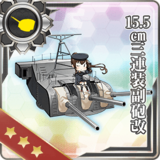
|
+1 | +1 | +1 | +1 | |||||||||||||||||||||||||||||||||||||||||||||||||||||||||||||||||||||||||||||||||||||||||||||||
+ 15m Duplex Rangefinder + Type 21 Radar Kai 2 OR 15m Duplex Rangefinder Kai + Type 21 Radar Kai 2 + Skilled Fire Direction Center OR 15m Duplex Rangefinder Kai + Type 21 Radar Kai 2 + Skilled Fire Direction Center
|
+1 | +1 | +1 | One-time | |||||||||||||||||||||||||||||||||||||||||||||||||||||||||||||||||||||||||||||||||||||||||||||||
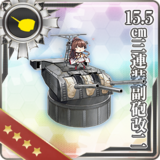
|
+2 | +2 | +3 | +2 | |||||||||||||||||||||||||||||||||||||||||||||||||||||||||||||||||||||||||||||||||||||||||||||||
+ 15m Duplex Rangefinder + Type 21 Radar Kai 2 OR 15m Duplex Rangefinder Kai + Type 21 Radar Kai 2 + Skilled Fire Direction Center OR 15m Duplex Rangefinder Kai + Type 21 Radar Kai 2 + Skilled Fire Direction Center
|
+1 | +1 | +1 | One-time | |||||||||||||||||||||||||||||||||||||||||||||||||||||||||||||||||||||||||||||||||||||||||||||||
+ 15m Duplex Rangefinder Kai + Type 21 Radar Kai 2 + Skilled Fire Direction Center
|
+1 | +2 | +1 | One-time | |||||||||||||||||||||||||||||||||||||||||||||||||||||||||||||||||||||||||||||||||||||||||||||||

|
+5 | +4 | |||||||||||||||||||||||||||||||||||||||||||||||||||||||||||||||||||||||||||||||||||||||||||||||||
+ 15m Duplex Rangefinder + Type 21 Radar Kai 2 OR 15m Duplex Rangefinder Kai + Type 21 Radar Kai 2 + Skilled Fire Direction Center OR 15m Duplex Rangefinder Kai + Type 21 Radar Kai 2 + Skilled Fire Direction Center
|
+2 | +1 | +1 | One-time | |||||||||||||||||||||||||||||||||||||||||||||||||||||||||||||||||||||||||||||||||||||||||||||||
+ 15m Duplex Rangefinder Kai + Type 21 Radar Kai 2 + Skilled Fire Direction Center
|
+2 | +2 | +3 | +2 | One-time | ||||||||||||||||||||||||||||||||||||||||||||||||||||||||||||||||||||||||||||||||||||||||||||||
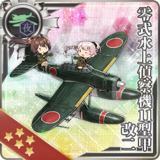
|
+1 | +1 | |||||||||||||||||||||||||||||||||||||||||||||||||||||||||||||||||||||||||||||||||||||||||||||||||
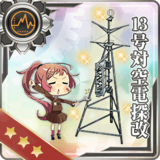 OR 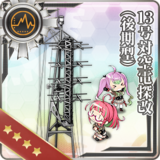
|
+1 | +2 | +1 | +3 | |||||||||||||||||||||||||||||||||||||||||||||||||||||||||||||||||||||||||||||||||||||||||||||||
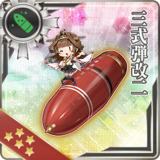
|
(1st equipped) (★0-1) | +2 | +2 | +2 | One-time | ||||||||||||||||||||||||||||||||||||||||||||||||||||||||||||||||||||||||||||||||||||||||||||||
| (1st equipped) (★2-3) | +2 | +3 | +2 | One-time | |||||||||||||||||||||||||||||||||||||||||||||||||||||||||||||||||||||||||||||||||||||||||||||||
| (1st equipped) (★4) | +3 | +3 | +2 | One-time | |||||||||||||||||||||||||||||||||||||||||||||||||||||||||||||||||||||||||||||||||||||||||||||||
| (1st equipped) (★5) | +3 | +3 | +1 | +2 | One-time | ||||||||||||||||||||||||||||||||||||||||||||||||||||||||||||||||||||||||||||||||||||||||||||||
| (1st equipped) (★6) | +3 | +3 | +2 | +2 | One-time | ||||||||||||||||||||||||||||||||||||||||||||||||||||||||||||||||||||||||||||||||||||||||||||||
| (1st equipped) (★7) | +3 | +3 | +2 | +3 | One-time | ||||||||||||||||||||||||||||||||||||||||||||||||||||||||||||||||||||||||||||||||||||||||||||||
| (1st equipped) (★8) | +3 | +4 | +2 | +3 | One-time | ||||||||||||||||||||||||||||||||||||||||||||||||||||||||||||||||||||||||||||||||||||||||||||||
| (1st equipped) (★9) | +4 | +4 | +2 | +3 | One-time | ||||||||||||||||||||||||||||||||||||||||||||||||||||||||||||||||||||||||||||||||||||||||||||||
| (1st equipped) (★MAX) | +4 | +4 | +2 | +4 | One-time | ||||||||||||||||||||||||||||||||||||||||||||||||||||||||||||||||||||||||||||||||||||||||||||||

|
(1st equipped) | +2 | One-time | ||||||||||||||||||||||||||||||||||||||||||||||||||||||||||||||||||||||||||||||||||||||||||||||||

|
(1st equipped) (★0-2) | +1 | One-time | ||||||||||||||||||||||||||||||||||||||||||||||||||||||||||||||||||||||||||||||||||||||||||||||||
| (1st equipped) (★3-4) | +2 | One-time | |||||||||||||||||||||||||||||||||||||||||||||||||||||||||||||||||||||||||||||||||||||||||||||||||
| (1st equipped) (★5-6) | +1 | +2 | One-time | ||||||||||||||||||||||||||||||||||||||||||||||||||||||||||||||||||||||||||||||||||||||||||||||||
| (1st equipped) (★7) | +1 | +3 | One-time | ||||||||||||||||||||||||||||||||||||||||||||||||||||||||||||||||||||||||||||||||||||||||||||||||
| (1st equipped) (★8) | +2 | +3 | One-time | ||||||||||||||||||||||||||||||||||||||||||||||||||||||||||||||||||||||||||||||||||||||||||||||||
| (1st equipped) (★9) | +2 | +1 | +3 | One-time | |||||||||||||||||||||||||||||||||||||||||||||||||||||||||||||||||||||||||||||||||||||||||||||||
| (1st equipped) (★MAX) | +3 | +1 | +3 | One-time | |||||||||||||||||||||||||||||||||||||||||||||||||||||||||||||||||||||||||||||||||||||||||||||||
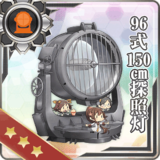
|
(1st equipped) | +4 | -1 | One-time | |||||||||||||||||||||||||||||||||||||||||||||||||||||||||||||||||||||||||||||||||||||||||||||||
| Ship-Type Bonuses | |||||||||||||||||||||||||||||||||||||||||||||||||||||||||||||||||||||||||||||||||||||||||||||||||||
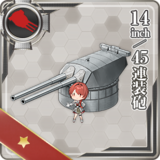 OR 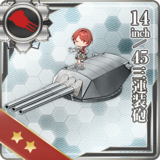
|
(★3-5) | +1 | |||||||||||||||||||||||||||||||||||||||||||||||||||||||||||||||||||||||||||||||||||||||||||||||||
| (★6-8) | +1 | +1 | |||||||||||||||||||||||||||||||||||||||||||||||||||||||||||||||||||||||||||||||||||||||||||||||||
| (★9-MAX) | +1 | +1 | +1 | ||||||||||||||||||||||||||||||||||||||||||||||||||||||||||||||||||||||||||||||||||||||||||||||||
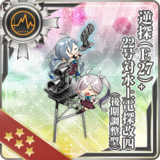
|
(1st equipped) (★7) | +1 | One-time | ||||||||||||||||||||||||||||||||||||||||||||||||||||||||||||||||||||||||||||||||||||||||||||||||
| (1st equipped) (★8) | +1 | +1 | One-time | ||||||||||||||||||||||||||||||||||||||||||||||||||||||||||||||||||||||||||||||||||||||||||||||||
| (1st equipped) (★9) | +1 | +1 | +1 | One-time | |||||||||||||||||||||||||||||||||||||||||||||||||||||||||||||||||||||||||||||||||||||||||||||||
| (1st equipped) (★MAX) | +1 | +2 | +1 | One-time | |||||||||||||||||||||||||||||||||||||||||||||||||||||||||||||||||||||||||||||||||||||||||||||||
+ ★4+ Type 13 Air Radar Kai (Late Model)
|
+1 | +4 | +1 | +3 | One-time | ||||||||||||||||||||||||||||||||||||||||||||||||||||||||||||||||||||||||||||||||||||||||||||||
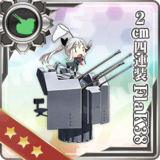
|
(★4-6) | +1 | +1 | ||||||||||||||||||||||||||||||||||||||||||||||||||||||||||||||||||||||||||||||||||||||||||||||||
| (★7-9) | +1 | +2 | +1 | ||||||||||||||||||||||||||||||||||||||||||||||||||||||||||||||||||||||||||||||||||||||||||||||||
| (★MAX) | +1 | +3 | +2 | ||||||||||||||||||||||||||||||||||||||||||||||||||||||||||||||||||||||||||||||||||||||||||||||||
| (★4-MAX) + Air Radar | +1 | One-time | |||||||||||||||||||||||||||||||||||||||||||||||||||||||||||||||||||||||||||||||||||||||||||||||||
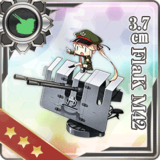
|
(★6-7) | +1 | +1 | ||||||||||||||||||||||||||||||||||||||||||||||||||||||||||||||||||||||||||||||||||||||||||||||||
| (★8-9) | +1 | +1 | +1 | ||||||||||||||||||||||||||||||||||||||||||||||||||||||||||||||||||||||||||||||||||||||||||||||||
| (★MAX) | +1 | +1 | +1 | +2 | |||||||||||||||||||||||||||||||||||||||||||||||||||||||||||||||||||||||||||||||||||||||||||||||
| (★6-MAX) + Air Radar | +2 | One-time | |||||||||||||||||||||||||||||||||||||||||||||||||||||||||||||||||||||||||||||||||||||||||||||||||
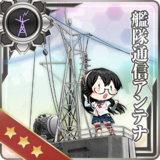
|
(★4) | +1 | |||||||||||||||||||||||||||||||||||||||||||||||||||||||||||||||||||||||||||||||||||||||||||||||||
| (★5) | +1 | +1 | |||||||||||||||||||||||||||||||||||||||||||||||||||||||||||||||||||||||||||||||||||||||||||||||||
| (★6) | +1 | +1 | +1 | ||||||||||||||||||||||||||||||||||||||||||||||||||||||||||||||||||||||||||||||||||||||||||||||||
| (★7) | +1 | +2 | +1 | ||||||||||||||||||||||||||||||||||||||||||||||||||||||||||||||||||||||||||||||||||||||||||||||||
| (★8) | +2 | +2 | +1 | ||||||||||||||||||||||||||||||||||||||||||||||||||||||||||||||||||||||||||||||||||||||||||||||||
| (★9) | +2 | +2 | +2 | ||||||||||||||||||||||||||||||||||||||||||||||||||||||||||||||||||||||||||||||||||||||||||||||||
| (★MAX) | +2 | +3 | +2 | ||||||||||||||||||||||||||||||||||||||||||||||||||||||||||||||||||||||||||||||||||||||||||||||||
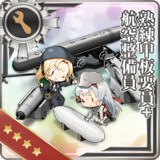
|
(1st equipped) (★1) | +1 | One-time | ||||||||||||||||||||||||||||||||||||||||||||||||||||||||||||||||||||||||||||||||||||||||||||||||
| (1st equipped) (★2) | +1 | +1 | One-time | ||||||||||||||||||||||||||||||||||||||||||||||||||||||||||||||||||||||||||||||||||||||||||||||||
| (1st equipped) (★3) | +1 | +1 | +1 | One-time | |||||||||||||||||||||||||||||||||||||||||||||||||||||||||||||||||||||||||||||||||||||||||||||||
| (1st equipped) (★4) | +1 | +1 | +1 | ||||||||||||||||||||||||||||||||||||||||||||||||||||||||||||||||||||||||||||||||||||||||||||||||
| (1st equipped) (★5) | +1 | +1 | +1 | +1 | |||||||||||||||||||||||||||||||||||||||||||||||||||||||||||||||||||||||||||||||||||||||||||||||
| (1st equipped) (★6) | +1 | +1 | +1 | +1 | +1 | ||||||||||||||||||||||||||||||||||||||||||||||||||||||||||||||||||||||||||||||||||||||||||||||
| (1st equipped) (★7) | +2 | +1 | +1 | +1 | +1 | ||||||||||||||||||||||||||||||||||||||||||||||||||||||||||||||||||||||||||||||||||||||||||||||
| (1st equipped) (★8) | +2 | +1 | +1 | +2 | +1 | ||||||||||||||||||||||||||||||||||||||||||||||||||||||||||||||||||||||||||||||||||||||||||||||
| (1st equipped) (★9) | +2 | +1 | +1 | +2 | +2 | ||||||||||||||||||||||||||||||||||||||||||||||||||||||||||||||||||||||||||||||||||||||||||||||
| (1st equipped) (★MAX) | +3 | +1 | +1 | +2 | +2 | ||||||||||||||||||||||||||||||||||||||||||||||||||||||||||||||||||||||||||||||||||||||||||||||
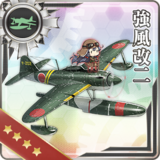
|
(★3-4) | +1 | |||||||||||||||||||||||||||||||||||||||||||||||||||||||||||||||||||||||||||||||||||||||||||||||||
| (★5-6) | +1 | +1 | |||||||||||||||||||||||||||||||||||||||||||||||||||||||||||||||||||||||||||||||||||||||||||||||||
| (★7-9) | +1 | +1 | +1 | ||||||||||||||||||||||||||||||||||||||||||||||||||||||||||||||||||||||||||||||||||||||||||||||||
| (★MAX) | +1 | +1 | +1 | +1 | |||||||||||||||||||||||||||||||||||||||||||||||||||||||||||||||||||||||||||||||||||||||||||||||
- Hidden Fit Bonuses
- Has some hidden fit bonuses when equipped with certain equipment. Please see Hidden Fit Bonuses for more details.
Important Information
Drop Locations
| Ship | Rarity | Type | No. | World 1 | World 2 | World 3 | World 7 | World 4 | World 5 | World 6 | Remarks | |||||||||||||||||||||||||||||
|---|---|---|---|---|---|---|---|---|---|---|---|---|---|---|---|---|---|---|---|---|---|---|---|---|---|---|---|---|---|---|---|---|---|---|---|---|---|---|---|---|
| 1 | 2 | 3 | 4 | 5 | 6 | 1 | 2 | 3 | 4 | 5 | 1 | 2 | 3 | 4 | 5 | 1 | 2 | 3 | 4 | 5 | 1 | 2 | 3 | 4 | 5 | 1 | 2 | 3 | 4 | 5 | 1 | 2 | 3 | 4 | 5 | |||||
| Yamato | SS Holo | BB | 131 | LSC only | ||||||||||||||||||||||||||||||||||||
Voice Lines
Quotes
| Event | Japanese/English |
|---|---|
| Introduction Play |
1st ship of the Yamato-class battleships, Yamato. Arriving on station! |
| 大和型戦艦、一番艦、大和。推して参ります! | |
| Introduction Play |
1st ship of the Yamato-class battleships, Yamato. My anti-air equipment has been greatly upgraded.[1] |
| 大和型戦艦一番艦大和。対空火器を大幅に強化致しました。 | |
| Introduction Play |
Upgraded Yamato-class battleship, Yamato, arriving on station! |
| 改大和型戦艦、大和、押して参ります! | |
| Introduction Play |
Upgraded Yamato-class aviation battleship, Yamato, arriving on station! |
| 改大和型航空戦艦、大和、押してまいります! | |
| Library Play |
I'm the 1st ship of the Yamato-class battleships, Yamato.
I was built in secret at the Kure Naval Arsenal as the trump card for the fleet's decisive battle.[2] With this body filled with the best technology of the day, and together with the 2nd ship Musashi, we did our best as the main force of the combined fleet! |
| 大和型戦艦一番艦、大和です。
艦隊決戦の切り札として、呉海軍工廠で極秘建造されました。 当時の最高技術の粋を結集されたこの体、二番艦の武蔵とともに、連合艦隊の中枢戦力として頑張ります! | |
| Secretary 1 Play |
Admiral, what is it? |
| 提督、なんでしょう? | |
| Secretary 1 Play |
Admiral? Ummm, no, it's fine but... |
| 提督~? あの~、いえ、いいですけど… | |
| Secretary 1 Play |
Admiral, I'll continue to be here for you. |
| 提督、これからもともに。 | |
| Secretary 2 Play |
A hotel you say? Th-that's wrong![3] |
| ホテルですって?ち、違います! | |
| Secretary 2 Play |
Jeez, you better stop calling me "Hotel"! |
| んもぉ~、ホテルなんて言わせませんよ! | |
| Secretary 3 Play |
Ummm? Are you that interested in me? It's because I have a bit too many secondary guns right? |
| あのー? そんなに気になります? やっぱり副砲がちょっと多いの? | |
| Secretary 3 Play |
Admiral? Ummm, well... my living conditions are a bit different from the other girls so... is that alright?[4] |
| 提督? あの、まあ…居住性は他の娘とは段違いではあるのだけれど…いいの? | |
| Secretary 3 Play |
Uhm... Admiral? I am confident in my firepower and living conditions but... Are you fine with this? Jeez. |
| あの…提督?もちろん火力も居住性も自信あるだけれど…いいのかしら?もう。 | |
| Secretary Idle Play |
Hmmm... ah... Sorry, Admiral. Are my main guns in the way? |
| ん…あ…提督ごめんなさい。主砲ちょっと邪魔ですか? | |
| Secretary (Married) |
Admidal, aren't you a bit tired? |
| 提督、少しお疲れではないですか? | |
| Secretary (Married) Play |
Admidal, aren't you a bit tired? Shall I make you my special black tea? It really relaxes you. Please wait a bit. |
| 提督、少しお疲れではないですか?大和が特製紅茶、お入れしましょうか。気持ちが休まりますよ。ちょっと、待っていて下さいね。 | |
| Wedding Play |
Admiral, thank you for everything. I love this moment more than doing my duties as the combined fleet flagship or shooting at enemies. I'll always... be working hard by your side. |
| 提督、いつもありがとうございます。連合艦隊の旗艦を務めるよりも、敵戦艦と撃ちあうよりも、今、こうしている時が私は一番好き。大和は…ずっと提督の、あなたの側で、頑張ります。 | |
| Player's Score Play |
Is that a message from Imperial General Headquarters?[5] |
| 大本営からの通信ですか? | |
| Player's Score Play |
Our fleet's military records? I'm looking forward to it. |
| 我が艦隊の戦績ですか?楽しみです。 | |
| Joining the Fleet Play |
Battleship Yamato, combined fleet, sortieing! |
| 戦艦大和、連合艦隊、出撃です! | |
| Joining the Fleet Play |
Flagship Yamato, sortieing! |
| 旗艦大和、出撃します! | |
| Equipment 1 Play |
A remodel? Thank you! |
| 改装ですね?ありがたいです! | |
| Equipment 1 Play |
Anti-air or anti-ship. Which should I focus on? |
| 対空、対艦。どちら重視かなぁ? | |
| Equipment 2 Play |
Th-thank you very much! |
| あ、ありがとうございます! | |
| Equipment 2 Play |
I'm happy. Admiral, thank you♪ |
| 大和、嬉しい。提督、感謝です♪ | |
| Equipment 3[6] Play |
Off I go! |
| 行くわ! | |
| Supply Play |
My deepest gratitude for this. |
| ありがたく頂きます。 | |
| Docking (Minor Damage) Play |
I'll be in the bath for a bit. |
| ちょっと、お風呂に行ってきます。 | |
| Docking (Minor Damage) Play |
I'm going to take a short bath. |
| 短めのお風呂、いただきます。 | |
| Docking (Major Damage) Play |
Owowow~ I'm sorry. I can't believe they got me this good. |
| イッタッタ~ ごめんなさい、私がここまでやられるなんて~ | |
| Docking (Major Damage) Play |
I-I didn't underestimate them but, I'm sorry. |
| あ、甘く見た訳じゃないんだけど、ごめんなさい。 | |
| Construction Play |
It seems the construction of a new ship has been completed. |
| 新造艦の建造が完了したようです。 | |
| Construction Play |
A new ship girl has joined the front lines. |
| 新しい艦娘が戦列に加わりました。 | |
| Returning from Sortie Play |
Thanks for your hard work. The fleet has returned to port. |
| お疲れ様です。艦隊、帰投しました。 | |
| Returning from Sortie Play |
The fleet has returned safely to port. Thank goodness~! |
| 艦隊が無事帰投しました。良かったぁ~! | |
| Starting a Sortie Play |
Battleship Yamato, setting forth! |
| 戦艦大和、推して参ります。 | |
| Battle Start Play |
Come, let's do this! Prepare for combat! |
| さぁ、やるわ!砲雷撃戦、用意! | |
| Battle Start Play |
Yamato, beginning combat! |
| 大和、砲雷撃戦、はじめます! | |
| Battle Start Play |
I'll show you the true firepower of an upgraded Yamato-class! You can count on me. Prepare for battle! |
| 改大和型の火力、存分にお見せします!お任せください。砲戦、良い! | |
| Battle Start Play |
Enemy fleet spotted! Yamato Air Corps, please prepare for take-off! I'll take command of the air battle. |
| 敵艦隊、発見!大和航空隊、発艦始めてください!航空打撃戦、この大和を指揮を取ります。 | |
| Attack Play |
No. 1 and No. 2 cannons, open fire! |
| 第一・第二主砲、斉射、始め! | |
| Attack Play |
Enemy ships acquired, all guns, mow them down! |
| 敵艦捕捉、全主砲薙ぎ払え! | |
| Special 1 Play |
Yamato, leading the attack! Musashi, follow me! 1st Fleet, all guns, full salvo! |
| 大和、突撃します!武蔵続いてッ!第一戦隊、全主砲、全力斉射ッ! | |
| Special 2 Play |
Yamato, leading the attack! 2nd ship, please follow my lead! All guns, full salvo! |
| 大和、突撃します!二番艦も続いてください!全主砲、斉射ッ! | |
| Night Attack Play |
Bracketed huh... Yup, the next shot will be a direct hit.[7] |
| 夾叉か・・・うん、次は直撃させます。 | |
| Night Attack Play |
Is that so... If that's the case... then I have no choice but to do it! |
| そうか・・・それなら・・・やるしかないわね! | |
| Night Battle Play |
Battleship Yamato, starting night battle! |
| 戦艦大和、夜戦を敢行します! | |
| Night Battle Play |
Ready? Here we go. Fire! |
| いい?行くわ。撃って! | |
| Night Battle Play |
Battleship Yamato, charging! |
| 戦艦大和、突撃します! | |
| MVP Play |
I'm number one? I'm a bit proud of myself. Please leave the next naval battle to me too. |
| 大和が一番ですか。少し晴れがましいですね。次の海戦もお任せ下さいね。 | |
| Minor Damage 1 Play |
W-was that supposed to be a direct hit!? |
| そ、それで直撃のつもりなの!? | |
| Minor Damage 2 Play |
I have to fix this list... Hurry with the counterflooding![8] |
| 傾斜復元しないと…。注水を急いで! | |
| Major Damage Play |
Guh... I-I won't sink in a place like this...! |
| く…こ、こんな所で大和は沈みませんっ…! | |
| Sunk Play |
I'm... passing on again... all hands... to the top deck... Musashi... Shinano... I leave the rest to you... |
| また…逝くのね…総員…最上甲板…武蔵…信濃…あとは頼みます… |
- ↑ After being torpedoed by the USS Skate, she had two 15.5cm secondary guns removed during repairs and replaced with extra AA guns and machine guns.
- ↑ The "decisive battle" (艦隊決戦) was the underpinning doctrine of the IJN that called for a strong battleship force that would break the enemy fleet in a massive naval battle after operations had weakened them.
- ↑ A combination of her being kept in port for most of her career and her luxurious living facilities, she was called 'Hotel Yamato'.
- ↑ Her officer's quarters had air conditioning and heating and she even had ice cream and ramune making facilities on board. In addition, the kitchen staff were professionals recruited from restaurants. During the Commander's lunch, a military band would play for 40 minutes which was broadcast throughout the ship. The regular crew themselves had actual beds compared to the hammocks used by other ships.
- ↑ The Imperial General Headquarters (大本営) was for coordinating efforts between the Army and the Navy.
- ↑ This line is shared with expedition selection, resource collection, instant repair and development.
- ↑ A bracket is where subsequent salvos land on either side of a target. Either too far and too short or left and right. This means that minor adjustments are needed for a hit.
- ↑ During Ten-Go, an air attack caused her to list to port that was corrected with counterflooding.
Hourlies
| Time | Japanese/English |
|---|---|
| 00:00 Play |
0000. It's midnight. |
| マルマルマルマル。深夜ですね。 | |
| 01:00 Play |
0100. Admiral, it's almost time for you to get some rest. |
| マルヒトマルマル。提督、そろそろお休みにならないと。 | |
| 02:00 Play |
Admiral? Are you alright not sleeping yet? The time is now 0200. |
| 提督?まだ寝なくて大丈夫ですか?現在時刻マルフタマルマルです。 | |
| 03:00 Play |
0300. You're definitely going to be tired soon right? |
| マルサンマルマル。そろそろ流石にお疲れじゃないですか? | |
| 04:00 Play |
The time is now 0500. Admiral, it's almost morning. |
| 現在時刻マルヨンマルマルです。提督、そろそろ朝になっちゃいます | |
| 05:00 Play |
Admiral, it's 0500. The sky is getting brighter. |
| 提督、マルゴーマルマルです。空が白み始めてきちゃいましたね。 | |
| 06:00 Play |
It's morning. 0600. Morning sure came quickly right, Admiral? |
| 朝です。マルロクマルマル。提督、朝は本当に御早いですね。 | |
| 07:00 Play |
0700, it's time for breakfast. Would you like to have some of the Hotel Yamato's famous consomme?[1] |
| マルナナマルマル、朝食の時間。大和ホテル自慢のコンソメ御飲みになります? | |
| 08:00 Play |
The time is now 0800. Almost time for me to get to work as the combined fleet flagship huh. |
| 現在時刻マルハチマルマルです。連合艦隊旗艦としてそろそろ動きますね。 | |
| 09:00 Play |
It's 0900. Admiral, what operations are we doing today? |
| マルキュウマルマルです。提督、今日の作戦行動はどうされますか? | |
| 10:00 Play |
Admiral, what are you going to do with the other fleets? The time is now 1000. |
| 提督、他の艦隊の運用はどうされます?時刻は今、ヒトマルマルマルです。 | |
| 11:00 Play |
1100. I need to go prepare lunch soon... What would you like? |
| ヒトヒトマルマル。そろそろ昼食の準備をしないと…。何がいいですか? | |
| 12:00 Play |
1200. For lunch, it's the Hotel Yamato's famous... Ah... I'm not a Hotel... |
| ヒトフタマルマル ランチタイムに大和ホテル自慢の…あぁ…ホテルじゃないです | |
| 13:00 Play |
It's 1300. I feel a bit sleepy after eating. |
| ヒトサンマルマル、です。食後は少し眠くなりますね。 | |
| 14:00 Play |
It's 1400. *yawn*~! Ah, I'm not asleep! |
| ヒトヨンマルマルです。ふぁ~…はっ!あ、寝てませんよ!? | |
| 15:00 Play |
1500. Admiral, it's just ramune, but do you want some?[2] |
| ヒトゴーマルマル。提督、ラムネでも飲まれますか?1500. | |
| 16:00 Play |
1600. It's almost evening. |
| ヒトロクマルマル。そろそろ夕暮れ時ですね。 | |
| 17:00 Play |
1700. Admiral, it's almost sunset. |
| ヒトナナマルマル、提督、そろそろ日が暮れて来ました。 | |
| 18:00 Play |
the time is now 1800. Shall we take shore leave for the day?[3] |
| 現在時刻ヒトハチマルマルです。今日は半舷上陸にしちゃいます? | |
| 19:00 Play |
1900. Now that fleet duties have ended, let's have dinner. |
| ヒトキュウマルマル。艦隊執務はここまでにして、お夕食にしましょう。 | |
| 20:00 Play |
2000. Dinner is a full course~, and saying "Yamato Hotel" is...[4] |
| フタマルマルマルです。ディナーはフルコースですよー、なんたって大和ホテルの… | |
| 21:00 Play |
2100. Admiral, do you like my good living conditions? |
| フタヒトマルマル。提督、大和の居住性、いかがでしょうか? | |
| 22:00 Play |
The time is now 2200. Is it almost time for a bath? |
| 現在時刻、フタフタマルマルです。そろそろお風呂タイムかな? | |
| 23:00 Play |
The time is now 2300. Admiral, thanks for all your hard work everyday. |
| 時刻はフタサンマルマルです。提督、本日も一日、本当にお疲れ様でした。 |
Seasonal
| Ship | Japanese/English | Notes |
|---|---|---|
| Hinamatsuri 2016 Play |
Is it Hinamatsuri, Admiral? Oh, how cute! This is good. Why are you shy, Musashi? Isn’t this good? | |
| 提督、雛祭りですか?あら、かわいい!良いですねぇ~武蔵、何を照れてるの?良いじゃない、ね? | ||
| White Day 2016 Play |
Is it alright for me to accept these, Admiral? Excuse me. Thank you very much. I’ll help myself then. I’ll work hard next year! | |
| 提督、いいんですか、大和もいただいて?すみません。ありがとうございます。いただきますね。来年は、頑張りますから! | ||
| 3rd Anniversary Play |
The fleet’s 3rd Anniversary is here, Admiral. Congratulations! I’m, I’m happy! Let’s have a toast with ramune♪ | |
| 提督、艦隊は三周年を迎えました。おめでとうございます!大和も、大和も嬉しいです!ラムネで、乾杯しましょう♪ | ||
| Rainy Season 2016 Play |
Iowa? Ah, those teruteru bouzu are cute. Hey, how about we make some together? This is how I make them… | |
| Iowa、さん?あぁ、かわいいですね、そのてるてる坊主。ねぇ、良かったら一緒に作りましょ?大和のはね、ここをこうして… | ||
| Midsummer 2016 Play |
Please don’t stare, Admiral. I wonder if the red and white is too flashy… R-really? That’s good then. Come join me, Admiral♪ | |
| 提督、そんなに見ないで下さい。赤と白で少し派手だったかしら…そ、そうですか?なら、良かったです。提督、ご一緒に♪ | ||
| Autumn 2016 Play |
It’s autumn, Admiral. Autumn is the season of delicious food. I’ve got a new full course thought up too! | |
| 提督、秋ですね。秋は食べ物が美味しい季節。私も、新しいフルコース考えちゃいますね! | ||
| Saury Festival 2016 Play |
Saury? Support for saury fishing? Roger that. Battleship Yamato, heading to the Northern Waters! | |
| 秋刀魚?秋刀魚漁支援ですか?了解しました。この戦艦大和、北方海域に向かいましょう! | ||
| Christmas 2016 Play |
Merry Christmas! I’ve used the full power of my galley to make a special Christmas dinner, Admiral. I’ve even roasted a turkey. H-huh? Zuikaku? | |
| メリークリスマス!提督、大和烹炊所フルパワーでクリスマススペシャルディナーをご用意しました。七面鳥も焼き上がりましたよ。あ、あれ?瑞鶴さん? | ||
| End of Year 2016 Play |
Where should I put this, Houshou-san… Ah, over there? Roger. Whew, spring cleaning is hard work. Please leave this to me and get a good rest alright, Admiral? | |
| 鳳翔さん、これわどこしまえば…あぁ、そこですね?了解です。はぁ、大掃除は大変。提督は大和に任せて、ゆっくりしてくださいね? | ||
| New Year 2017 Play |
Happy New Year, Admiral. Please look after the 1st Fleet and I this year too. Now, let’s go. | |
| 提督、新年あけましておめでとうございます。本年も大和と第一戦隊をどうぞよろしくおねがいします。さあ、いきましょう。 | ||
| Valentine’s Day 2017 Play |
Alright, I made full use of my galley. Chocolate appetizers, chocolate soup, and steak with chocolate sauce as a main dish. | |
| よーし、大和の烹炊所フル活用しちゃった。チョコレットの前菜に、チョコスープ、メーンヂイシュはステーキのチョコレットソース掛け。 | ||
| 4th Anniversary Play |
The fleet has finally reached it’s 4th Anniversary, Admiral! Thank you. I’m really happy too. Let’s celebrate with Ramune… No, with a full course! | |
| 提督、艦隊はついに四周年を迎えました!感謝ですね。大和も本当に嬉しいです。ラムネで…いえ、フルコースでお祝いしましょう! | ||
| Rainy Season 2017 Play |
A Zuiun… Festival, Hyuuga-san? Yes, I recall I had plans for something like that too… Eh, that’s different? | Secretary 2. Zuiun Festival line. |
| 瑞雲…祭りですか、日向さん? はい、大和にも確かにそういった計画もあったのですが… えぇ、それとは、違う? | ||
| Early Summer 2017 Play |
It’s gotten a bit hotter, Admiral. Summer is here again this year. Eh, a swimsuit? Ah, yes. I went and bought one with Musashi just in case. | |
| 提督、少し厚くなってきましたね。今年も夏がくるですね。えぇ、水着ですか?あぁ、はい。一応武蔵と一緒に買ってあって。 | ||
| Late Autumn 2017 Play |
Musashi? What’s wrong? Are you cold? Is there something wrong with your engine room? I see, that’s good then. Let me know if you need anything alright? | |
| 武蔵?どうしたの?寒いの?機関部の調子でを悪いの?そう、ならいいけれど。何かあったら、お姉さんを相談してね? | ||
| Valentine’s Day 2018 Play |
Of course it’ll be my special heart-shaped chocolate cake for dessert. Alright, it’s done! Now to call the Admiral. Admiral! Admiraaal! Huh, Admiral? | |
| もちろんデザートは、大和特製ハート型チョコケーキ。よし、完璧!さあ、提督をお呼びしましょう。提督!提督ー!あれ、提督? | ||
| 5th Anniversary Play |
The fleet is celebrating it’s 5th Anniversary, Admiral. Congratulations. I am truly grateful. Let’s celebrate with raumube… No, with wine and a full course meal. | |
| 提督、艦隊はついに五周年を迎えました。おめでとうございます。大和も本当に感謝です。ラムネで…いえ、ワインとフルコースお祝いしましょう。 | ||
| 6th Anniversary Play |
Admiral, the fleet has reached its 6th Anniversary. My sincerest congratulations. I'm grateful. I'm happy too. I'll put my all into making a celebratory full course. | Secretary 2 |
| 提督、艦隊はついに六周年を迎えました。本当におめでとうございます。感謝ですね。大和も嬉しいです。お祝いのフルコース 、腕によりをかけて、ご用意しますね。 | ||
| 7th Anniversary 2020 Play |
Admiral, the fleet's 7th Anniversary is finally her. Congratulations! Shall we look back on these past 7 years? Let's have a toast with some Yamato Ramune... No, with a special reserve! | Secretary 2 |
| 提督、艦隊は、ついに七周年を迎えました。おめでとうございます!七年、考え深いですね?大和ラムネで…いえ、とっておきなワインで乾杯しましょう! | ||
| Autumn 2020 Play |
During this season, having some dessert would be nice too. I'll try making up some new cold desserts. Look forward to it. | Secretary 2 |
| この季節、デザートもいいですよね。私も冷たいデザート、新作ご用意してみますね。楽しみ。 | ||
| 8th Anniversary Play |
Oh, Yahagi, good work. Everything alright in DesRon2? I'm doing well. Thanks for your concern. Let's keep on working hard together. | |
| あら、矢矧、お疲れ様。二水戦は、いいの?大和は元気ですよ。心配してくれてありがとう。これからも一緒に頑張りましょう。 | ||
| 9th Anniversary Play |
Admiral, the fleet is welcoming its 9th anniversary. Congratulations. I'm also very happy. Let's toast to it with some ramune - no, with some champagne I'd set aside for this! | |
| 提督、艦隊は九周年を迎えました。おめでとうございます。大和も本当に嬉しいです。ラムネで、いえ、とっておきのシャンパンで乾杯しましょう! | ||
| Rainy Season 2022 Play |
I shall prepare for a new battle. | Secretary 2 |
| 大和も新たの戦いに備えます。 | ||
| Summer 2022 Play |
Curry at this time of year is great. It lifts your spirits. | Secretary 1 |
| この季節のカレー、いいですね。元気が出ますもの。 | ||
| Summer 2022 Play |
Yahagi, will you wear a swimsuit too? Wha? Is that so? Too bad. | Kai Ni Secretary 2 |
| 矢矧、あなたも水着に?えぇ?そうなの?残念。 |
Misc Lines
| Ship | Japanese/English | Notes |
|---|---|---|
| Final Battle 2018 Play |
Main guns, please hurry up with a firing solution. Battleship Yamato, opening fire with all guns. Fire! | Friend Fleet line |
| 主砲、諸元修正急いで下さい。戦艦大和、全主砲、全力射撃、行きます。ってー! |
CG
| Regular |
|---|
| Seasonal |
|---|
Trivia
- General Information
- She is named after Yamato Province, modern day Nara Prefecture.
- She was launched on the 8th of August 1940.
- Sunk on the 7th of April 1945 north of Okinawa (at 30° 22′ 0″ N, 128° 4′ 0″ E) in the famed Operation Ten-Go, along with Yahagi, Isokaze, Kasumi, Hamakaze, and Asashimo.
- Update History
- She was added on the 1st of August 2013 as Summer 2013 Event E4 reward.
- Was part of the LSC construction pool when it was released on 24th of December 2013.
- She got her Kai Ni on the 8th of June 2022.
- Misc
- Was cynically referred as "Yamato Hotel", a hotel located in Dalian China during WW2 time, as she never took part in any major battle pre-1944 due to her high consumption and her status as IJN's flagship. Referred as such in-game for the same reason.
- Yamato's remodel art features a 'Hirihoukenten (非理法権天)' kneesock (originally a flag). It reflects one of the old philosophy in feudal Japan where foolishness (非) is not above sensibility (理), sensibility is not above law (法), law is not above authority (権), and authority is not above divinity (天). As the emperor was treated as a divine figure in imperial Japan it has a meaning of "no men can oppose the (divine) emperor". A slogan adopted by the Imperial Japanese navy, this flag was hung on Yamato on her final voyage toward Okinawa.
- Wreck discovered on the 1st of August 1985, in 341 m (1120 ft) of water in the East China Sea 180 miles Southwest of Kyushu and North of Okinawa.
- She wears an Armband that resembles the Maritime signal Flag for the letter "Z", the Z flag played a major role in Japanese Naval History. On the 27th of May 1905, Admiral Heihachirō Tōgō raised the Z flag on his flagship the IJN Mikasa before the start of the Battle of Tsushima, and the Z flag was raised on the Akagi on the eve of the Attack on Pearl Harbor. The raising of the flag means the following: "The fate of Imperial Japan hangs on this one battle; all hands will exert themselves and do their best."
- The "Juu" in "Kai Ni Juu" means "heavy", emphasizing her having more and large guns and armor.
